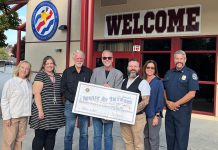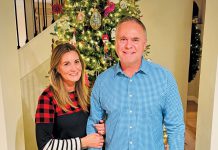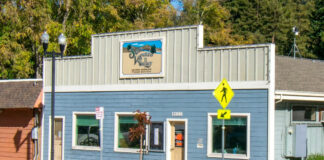
Don’t let the gray beard and twinkling blue eyes fool you. Inside Fred McPherson beats the heart of the environmental warrior he has been since he was a young man.
“Why did you decide to stay in the San Lorenzo Valley for over 40 years?” I ask.
We are sitting at the kitchen table with his wife, Roberta, as the sun’s rays and a wood stove warm their cottage in the woods.
“Because it’s still wild here, and there’s such a diverse ecosystem,” he replies. “You know, it’s a biological hot spot.”
Biological hot spot? Our little part of the world? I would have thought somewhere like the Amazon would be a hot spot, but it turns out that California is the only “hot spot” eco-region in North America. According to Conservation International, a hot spot is “the richest and most threatened reservoir of plant life on earth.”
More than 61 percent of our plants are found nowhere else. Covering much of the state and all the coastal lands, the California Floristic Province, as our hot spot is called, is home to the most diverse temperate coniferous tree community in the world and includes the famed coastal redwoods. Although in the past 150 years, we have lost 85 percent of our trees to logging and development.
Since the arrival of Europeans in California, some native animals have become extinct. Our state flag is a reminder of that, symbolizing the grizzly bear (Ursus californicus). The last reported grizzly in California was killed by a hunter in the 1920s.
Fred’s life has been devoted to saving our part of the biological hot spot. Several years ago, the Santa Cruz County General Plan for the San Lorenzo River proposed a string of dams along the waterways, sewer lines along the river and a freeway up to Boulder Creek.
“We would have been destined to become just like Berkeley,” Fred says, shaking his head.
By the time the highway got to Felton Faire, Fred got going. Along with the Valley Women’s Club and other environmentalists, they were able to save the watershed from development.
Fred grew up as a “river child” on the Kern River in a town that was dammed out of existence. He began volunteering for the Save the River campaign. The river still runs in his veins, and he enjoys taking people on riparian walks along the San Lorenzo.
“I show people how to ‘meet’ the river,” he said. “How to listen to it. Sit at different places and hear the different sounds. The river has many voices.”
On a perfect April morning, 14 of us gathered at Henry Cowell Redwoods State Park to take a walk along the San Lorenzo with our river master. Fred takes in all the senses.
“Smell the alders and the black cottonwoods,” he said. “Something always reveals itself.”
He points out native plants like colt’s foot and giant trilliums, and which ones the native American Indians used as medicine.
Fred had made a promise that he hoped to keep — that we would see the rare adult steelhead trout. Once, the San Lorenzo ran rich with trout, but logging and development have contributed to its listing as an endangered species.
“Steelhead!” Fred finally said, with glee.
Looking into the river, we saw what looked like a squadron of tiny submarines pointed north, moving almost imperceptibly. The steelhead had come back to spawn in their own birthplace. Hopefully, their young will swim in the river for a year or two before heading downstream to the Pacific Ocean to repeat the ancient cycle.
Looking south, a lone rainbow-colored steelhead, sparkling in the sun, had floated up to the manmade dam. We watched in suspense for a few minutes as the fish waited and then, suddenly, with an enormous swish of its powerful tail, plunged over the dam and reclaimed its freedom.
Cheers went up.
The redwoods and the river are spiritual mentors to Fred and many of us. It is where we go to discover the peace that eludes us in our human-built world.
After all the years of fighting to preserve our native redwood ecology, I ask Fred if it was all worth it.
He looks up, smiles and says, “Well, the redwoods are still here, aren’t they?”
Carol Carson has been a docent for Henry Cowell Redwoods State Park and has taught courses on Big Basin State Park for UCSC Extension. She volunteers as an environmental educator for the Valley Women’s Club and can be contacted at ca****@*********on.com.












